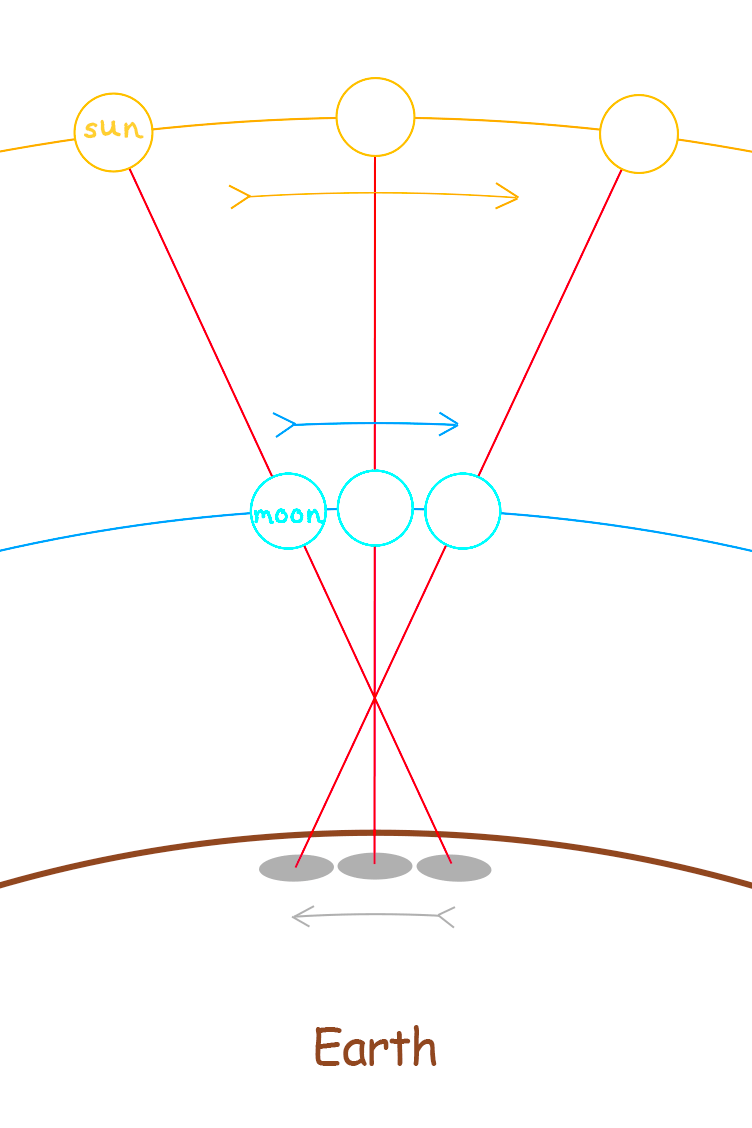While we are on the subject of astronomy, I’d like to share just a bit more about eclipses. Here are my questions (those who follow us on Facebook may have already seen these questions. Try not to blurt out the answer before your friends have had a chance to think about it):
First Question
- Question:
- If the sun and moon both travel from east to west, why was the total solar eclipse last August seen first in Seattle and last in Charleston?
- Answer:
- The simple answer is that as the sun and moon race across the sky, the sun (on the outer lane) overtakes the moon (on the inside lane). Here is an illustration of that.

Since the surface of the Earth is moving from west to east as the Earth rotates, the big question for some of you is, “which is moving faster”? It turns out it is the shadow. (Actually, the Earth’s rotation is reflected by the sun’s movement in this picture, but the question is still valid).


I derived this from other maps found on a NASA website. This information is courtesy of Fred Espenak, NASA/Goddard Space Flight Center, from eclipse.gsfc.nasa.gov.
Last Question
- Question:
- Which side of the country would see a lunar eclipse first? Why?
- Answer:
- This could be considered a trick question. As the second drawing (hidden in the first note) suggests, the geometry of a lunar eclipse is totally different from a solar eclipse, so the relative sizes of the shadow and the object being shadowed are entirely different.

Our last animated illustration shows the relative size of the Earth and moon (shadow) from the sun (under specific conditions) during a solar eclipse. For a lunar eclipse, imagine the Earth is now the Earth’s shadow as the moon (in the place of the moon’s shadow) goes behind it. As the moon flies into the shadow, that event is visible simultaneously wherever the moon can be seen. For another (possibly better) view, see the second illustration in “A Nighttime Solar Eclipse?”.
Well, that should just about cover everything you ever wanted to know about an eclipse (and more). If you have any questions, you can ask in the comment section, or you may wish to consult an astronomer.
Leave a Reply